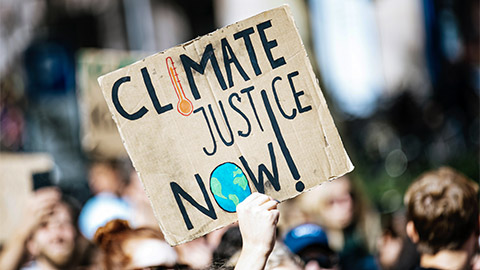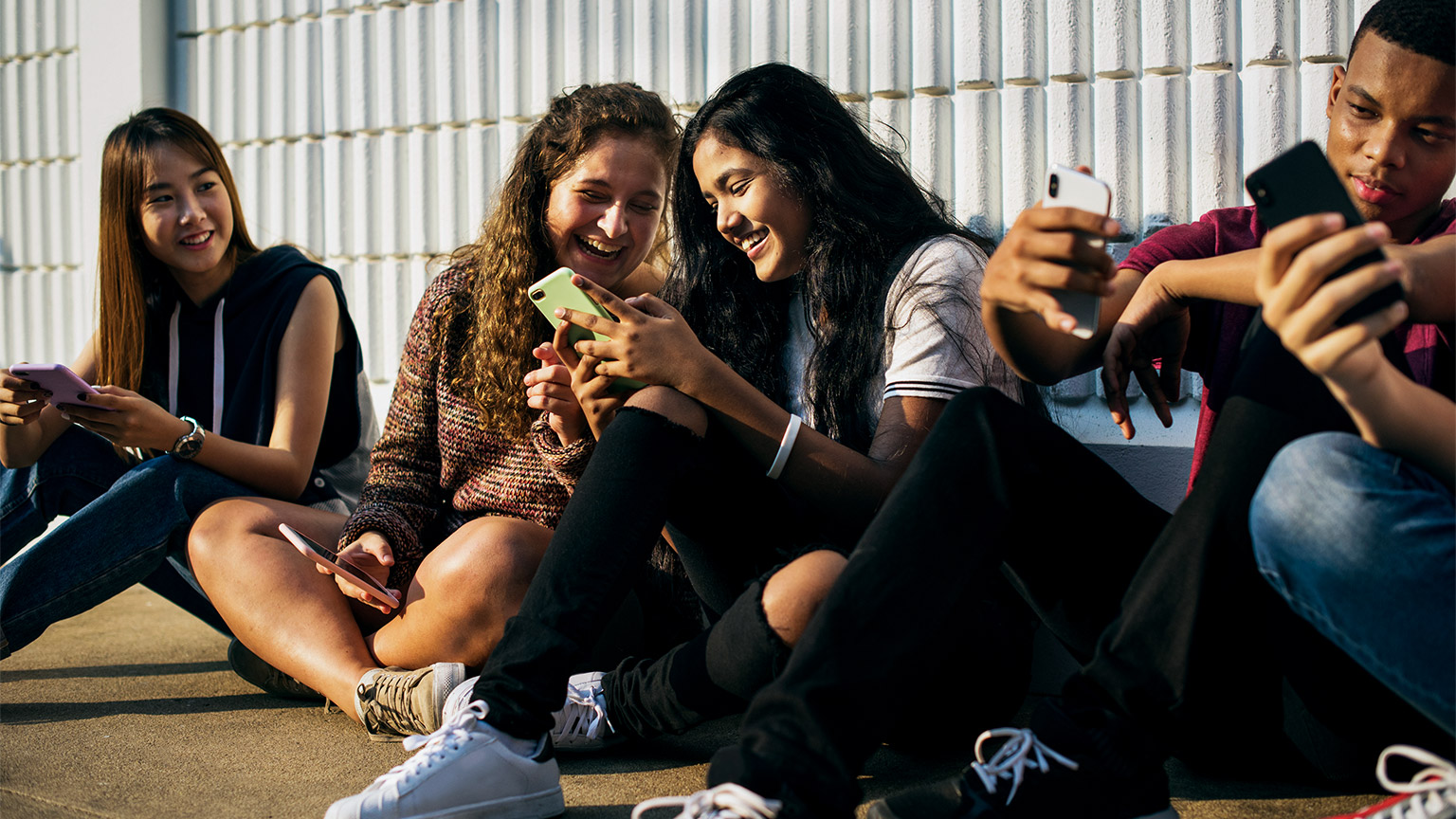Our interconnected world
Globalisation is not new. Trading and interaction between cultures and countries has occurred throughout history. However, the speed of interaction and the ease of communication across the range of online platforms is new. Change is now fast. New innovations and technologies are constantly appearing. The complexity of artificial intelligence (AI) and its online influence is not always obvious.
Globalisation also affects social change as people communicate and move across borders. Young people experience this change, as do all, in various areas of their lives. Their experiences with globalisation reflect their culture, age, socio-economic status, gender, identity and individual differences. Much of this experience for young people comes from their online interaction rather than physically travelling to a different part of the world.
In this topic, we explore:
- what globalisation is and how it influences young people and youth culture
- the positives of global online connection for young people, but also the potential risks to their well-being
- technology and its impact in the lives of young people
- how we can support young people to navigate the technological advances that come with globalisation.

Impacts of globalisation
The following video invites you to consider the impacts on globalisation in various areas, including ideas, behaviours, styles, products and news. As you watch, think about how the high-level influences discussed like government policy, filter down to the lived experiences of young people in New Zealand.
Task: Watch the video.1 What might the ideas presented in this video mean for the work you do with youth?
Who is our village?
Take a moment to consider how globalisation is influencing you and your decisions. Start with where you live. What are the most obvious global influences you experience?
Many of these influences overlap, but take a moment to consider:
- Food: How far has it come? How many people have been involved in its production?
- Physical environment: Where do you live? Who is responsible for town planning and transport planning?
- Community: Who do you have around you? Who do you interact with daily? Where are they from?
- Day-to-day influences: Who influences your day-to day-decisions? Is it whānau, workmates, your friends, etc.?
- Wider context: Who influences your decisions in a wider context? It is marae and iwi, government, local councils, workplaces, religious organisations, employers?
What about online communities you are in? What about media? For example, consider how your decisions are influenced by social media apps, television programmes, news sites, gaming, podcasts and YouTube clips.
Think about:
- Which online communities are you a part of? How do they influence your day-to-day life?
- How does your online presence reflect the communities you are involved with offline?
- How is your engagement in online community different to offline community?
- How are you influencing others in these different spheres? What type of online influence do you have?
- Are you connected with young people online? What is your influence here?
When we step back and consider who is influencing our day-to-day lives, we can see the globalisation of our world, but we may not yet be aware of the increasing influence of artificial intelligence (AI) and other technological advances.
Globalisation and young people
Globalisation has both positive and negative effects on our lives. And young people today are interconnected with and influenced by much greater access to the wider world than previous generations.
Academics, businesses and governments are constantly evaluating the impact of globalisation on our work and lives. The changing nature of work in the internet age is an example of this. We can trade goods and services, and share ideas at increasing speed, which brings innovation, technology sharing, more trading and faster travel.
These days, people find themselves having to change jobs more quickly as technology and markets change. The older model of one career for life becomes less and less likely. So, what does this all mean for young people?

Task:United Nations report predicts impacts of Globalisation
The United Nations report Globalization WPAY was written in 2005.2 Look through this report and reflect on the points raised. How well did it predict globalisation? What in this report is relevant for youth in New Zealand in the 2020s?
Task: Read this quote from the report. Think about what it means in terms of globalisation and youth in New Zealand.
“[Y]oung people need to have viable alternatives to remain in their countries. This means addressing root causes such as poverty […]”
United Nations, 2005
Task: Read the opinion piece How hope for a generation was lost by financial journalist Bernard Hickey.3
The writer suggests migration as the solution for working people feeling the impacts of New Zealand’s housing crisis – i.e. move to another country where wages are higher and rent and property prices are not constantly rising. You may or may not agree with the writer’s conclusions, but as you read, consider how a global market, migration and globalisation impact youth and their decisions today.
You may also wish to listen to the podcast embedded in the article.
What does it mean to be a global citizen?
In a previous topic we looked at identity formation; let’s now think about how this formation is influenced by the global context in which young people live.
The term global citizen as an identity is often used when we discuss youth identity, but it is worth considering what this means. Take a moment to read the OXFAM definition of the term ‘global citizenship’.4
The use of the term global citizens, as applied to youth, may miss the complexity of young people’s identity. In an article titled Young people, identity and living in a global society from 2008, Douglas Bourn urged those who work with young people to develop a deeper understanding of the term5:
The term global citizenship may be becoming increasingly used within development education but unless the debates, research and practices take account of the complex nature of identities and belonging, then the valuable role it can play within a young person’s learning will be at least marginal and more likely irrelevant.
Youth have access to a range of cultures and ideas as never before, but they can also be targets of mass marketing of ideas, messaging and products which can influence their culture and identity. In that same article, Bourn suggests young people5 6:
… are surrounded by a ‘dizzying array of signs and symbolic resources dislodged from traditional moorings’, are the main targets of global consumer cultures and are increasingly targeted with messages concerning global social problems
This array of social media platforms, news sites, games and online streaming services can provide both positive and negatives for young people. The influence on youth culture and identity can be far reaching.
- Would the young people that you work with consider themselves global citizens?
- Do they identify this as being part of their identity?
In his TEDx Talk Maintaining identity in a globalized world, Sahrid Kancherla poses the question: Can we be together and be different at the same time?7
Perhaps his thinking is a way to consider youth identity and culture? Watch this young person’s talk and consider youth culture and identity in New Zealand and how much of a young person’s culture remains central to who they are in the online global world.
Global communities, youth culture, local support
There are many benefits to globalisation and online interactions for young people. Online communities can be transformative for young people, supporting them to celebrate their own identity and culture.
The range of spaces that young people have available can facilitate youth to find support to help them navigate diversity and difference. This can be especially true for young people who may not be well represented in mainstream media, or in their offline community.
Indigenous and LGBTQI+ communities present good examples of this connection and support. Young people themselves can facilitate support through an online presence that curates a positive experience, provides resources and offers connection.
RainbowYOUTH in New Zealand is an example of a community that connects youth and supports youth identity across New Zealand. A queer young person 30 years ago would have had to rely on a limited pool of people to support them. They may have been in an environment that was not supportive or even actively abusive. However today, if they find themselves without positive connections, they can still find online spaces that provide them additional safety, connection and knowledge.
Spend a few minutes exploring the RainbowYOUTH website, including the ‘Information & Resources’ page (you can find this under the ‘What We Do’ tab).8 Through the website you can also connect to their Instagram, Facebook and Twitter feed.
An example of global communities is the use of online communities for support by young LGBTQI+ people during the COVID-19 pandemic. Read the article How young LGBTQIA+ people used social media to thrive during COVID lockdowns to learn about how this access provided support for young people during this time.9
However, you will notice the article also discusses the problems that arose in the online world as young people encountered hateful content.
What other online communities do young people you work with access?
Read the following article Black New Zealanders are taking control of their narratives by Beth Teklezgi, Naledi Mthembu and Renati Waaka.10
Consider what Hycenta Uwukinda says in the article:
“I think previously I didn’t really feel fully represented in New Zealand and would often look towards America or the UK.”
They don’t state how they were accessing American and UK communities; however it is likely they are using the online world to create connection, find identity and join a community. Certain communities are often only available to young people online, and globalisation and technology can create a forum for them to have this interaction.
Think back to the topic on youth identity formation. What other online communities do you think young people access that may influence their identity?
Now think back to your own identity formation and what online communities you accessed or would have wanted to access at different times as a young person.
Explore further
If you would like to know more about how globalisation has impacted the LGBTQI+ community and their fight for rights, read the article How globalisation has transformed the fight for LGBTQ+ rights by Mark Gevisser.11
Communicating online

How often do adults frame social media connection as negative for young people?
Can it also be positive? Social networking sites (SNSs) also provide spaces for global and local connection. In her descriptive article, An Analysis of How Rangatahi Māori Use Social Networking Sites, Acushla Deanne O’Carroll states in relating to Māori use of social media12:
It is clear that SNSs are facilitating whānau connections and communication and thus increasing whānau ties and connectedness. Whānau ora (family wellbeing) is a direct result of maintaining healthy and consistent communication with family members, marae, hapū and iwi, increasing capability and providing whānau with the tools to carry out their roles and tasks of being family orientated and connected.
The downside of this is of course that young people themselves can feel the need to curate their online presence to fit and this can lead to unintended consequences. There can also be a blurring of online and offline relationships. O’Carroll relates this to Māori12:
The blur between offline and online relationships can be difficult to manage and, in a Māori context, could potentially raise conflicts amongst whānau members requesting friendship in SNSs. If declined, this may cause some upset between those whānau members, which evidently may impact on their offline relationship.
Explore further
You can read O’Carroll’s full article if you want.12 See if you can answer the following questions:
- Do you know how young people integrate their online social media identity into their offline lives?
- What resources do they need to navigate this connection between the two?
Often online communication is occurring within contexts we may not always be familiar with. If we are not a ‘gamer’ we may not be aware of the types of communication that occur and therefore may not know to ask about what’s happening.
Task: Watch the video Abuse is an everyday reality for female gamers [5:08], which contains interviews with female gamers discussing the harassment and abuse they receive online.13
Were you aware of this as a possible online forum for communication, and that bullying and abuse can also be a part of this environment?
Explore further
Do you want to learn more about the psychology behind abuse among players in online gaming? Read the article Why are gamers awful to each other? The psychology of online abuse on the website PCGamesN.14
If you’re interested in looking more closely at young people’s online behaviour, you can read the findings summarised on the webpage Understanding young people’s digital and online behaviour as part of the Ministry of Education’s guide ‘Digital technology – A safe-use guide for schools’.15
If you would like to learn more about whether social media is negatively affecting children and young people, read the article Does social media cause depression? by Caroline Miller.16
Have you heard of a game designed in New Zealand that is aimed at helping young people cope if they are feeling down or experiencing depression? Explore the website for the game Sparx, which is a potential free resource available for young people to access.17
The challenge in working alongside young people is to support them to navigate this increasingly complex world; to support them to digitally connect in positive ways that enhance their well-being. And to do this, we need to understand what the benefits, as well as downsides, are of this online world.
In New Zealand, young people are embracing the online world and finding answers and ways to support each other. Young people can create platforms that connect to their age group. Those of us who work with young people do not need to have all the answers for them, but we do need to provide an environment where they can create their own answers.
Watch the video These apps are democratising mental health care [3:49] for an example of innovations from youth in this space.18

The spread of ideas
This quote is from the United Nations webpage for International Youth Day 202019:
The theme of International Youth Day 2020, “Youth Engagement for Global Action” seeks to highlight the ways in which the engagement of young people at the local, national and global levels is enriching national and multilateral institutions and processes, as well as draw lessons on how their representation and engagement in formal institutional politics can be significantly enhanced.
As you watch the video, consider the impacts of COVID-19 on young people and their connections. Have you witnessed the positive connections and actions, like the ones UN Secretary-General Antόnio Guterres highlights in his speech, here in New Zealand?20
Think about the following questions:
- How is New Zealand youth culture and the development of thinking being influenced by globalisation?
- Think about the issues that young people talk to you about. How much are local focused and what are global focused? Is there cross over?
- Are these issues created or influenced by the increased connection through globalisation?
One example is the influence of the climate strikes by Greta Thunberg in Europe. This global movement has had a direct influence in the development of the School Strike 4 Climate NZ. What is interesting to note is the speed at which the protests influenced young people and spread around the world – started in May 2018 by Greta Thunberg and spreading across the world to New Zealand, where we held our first strike in March 2019.
You can see the speed and breadth of the strike movement in the sources provided here:
- Wikipedia has a list of the school climate strikes held around the world, listed in chronological order.21
- You can read about New Zealand’s movement at the official School Strike 4 Climate NZ website.22
Can you think of other movements that have come from overseas and connected with New Zealand youth culture in such a direct way?

The digital divide
While many young people in New Zealand have constant access to the internet and technology, there is still a digital divide that can reflect disadvantage and inequality. The BNZ report ‘Digital skills for life in Aotearoa 2021’ states23:
Unfortunately, demographic groups with low digital skills mirror existing lines of disadvantage in New Zealand (low household income, disability status, and education). Critically, if digital skills gaps across these groups are not addressed, inequality in New Zealand will likely get worse as the digital transformation rolls on.
Take some time to reflect on the questions below.
- Do young people in your work/community have access to technology? Is this constant access or is it restrained by other factors, such as needing to attend clubs, libraries to gain access?
- Are there disabilities that restrict access for young people you work with or in your community?
- Do you know what support is available for young people in your community to support them access digital technology? Does your workplace have a strategy to support youth access technology?
- If we consider the online global world to influence and develop culture, what does it mean to not be able to have equal access to this community?
Who is addressing this divide?
Listen to the podcast Digital Wings working to reduce the digital divide [8:47] about this charitable trust’s work redistributing computer equipment to organisations in need.24 This has the flow-on effect of reducing e-waste.
Are you aware of other organisations working to support digital access? You may wish to look at what is available for young people in your communities to access computers.
Explore further
Here is the full Digital skills for life in Aotearoa 2021 report from BNZ if you would like to take a closer look.23
To learn more about the ‘digital divide’ and its impacts on equality, read the news article Digital divide could lead to ‘entrenched inequity’, economist warns on the RNZ website.25
Who is influencing what we watch and use online?
Online safety is critical to anyone engaging in online content. But how many young people are able to pose the question of who or what is curating their online engagement?
It was not so long ago that knowledge was overwhelmingly distributed through face-to-face interactions, books, print media, radio and television. The online world has changed this, and the transfer of knowledge and views has moved into a new space where we may be unable to see who is creating the content and where we are being directed to look. More and more often, the ideas and images that are put in front of us are curated by AI.
For instance, have you noticed that when you search online for an item, very soon ads will pop up in your social media that reflect what you were searching for?
Or imagine yourself as a 13-year-old, interacting in an online world and coming across extremist views. What would you have needed at that age to navigate this world? Would you be able to critically evaluate what you are reading?
Watch the following introduction to the social media influencer marketing company Influential and as you watch, think about how this AI world and influencers directs the traffic and advertising you see on your phone.26
What about the virtual footsteps we leave in the online world? Young people develop at different rates and may not have the cognitive ability to understand what may happen to the data that is gathered on them and how this may influence their lives. Watch the following video titled ‘Privacy, identity and autonomy in the age of big data and AI’ – although it is a few years old, it gives an insight into online privacy and browsing behaviour.27
Uncovering fake news
Another example of online influence is the rise of online fake news. Many of us struggle to critique everything we are exposed to, and while fake news (in the form of unsubstantiated rumours or urban myths) and gossip is a part of being human, the prevalence online is new.
Read this Netsafe article on How to spot fake news.28 You may also wish to download their guide, which comes as a one-page PDF. Are you aware of how young people you interact with make decisions about truth in what news they consume?
Explore further
To learn more about young people’s news literacy, you can read Young people and news media literacy by Rebecca Vukovic.29
If you’d like to know more about how online content is made and how it is consumed, have a look at the findings of an experiment by the World Wide Web Foundation on how Facebook’s algorithm curates the news stories their users see: The Invisible Curation of Content: Facebook’s news feed and our information diets.30
Supporting young people online
So how can we support young people with this fast-evolving and complicated world? The first step would be understanding where they are going and what they are doing. However, if we are struggling to interact with and understand the changing online landscape, then how can we support young people to engage safely?
Fortunately, there are a range of resources available to help us navigate this world and to support young people. Young people may also have their own strategies; our role can be to facilitate the conversations and to help set up strategies and safe spaces.
But to do this we need to understand these spaces as well. We need to take the time to explore the technology, become familiar and understand what is available and how it works. If we have conversations with young people, it is useful to understand what they are accessing and how they are accessing it.
Netsafe has a range of resources available to support online safety. Go to their website and spend some time exploring the guides, articles and resources that are available.31
Explore further
If you’d like to read some personal stories of cyberbullying from New Zealand teenagers, check out the article Cyberbullying is illegal in NZ yet nearly one third of teens experience it by Zoe Madden-Smith.32

For this assessment you need to be able to have conversations with young people about globalisation and technology. Do you have a forum where you can facilitate these discussions?
Do you feel you could discuss technology with young people and have some understanding of the online platforms they access? If not, you may wish to research some of the currently popular apps and online platforms and have a go at them yourself.
You are now ready for task 2 of Assessment 1.3.

